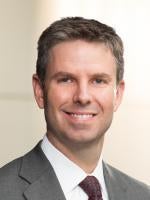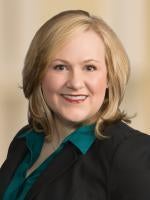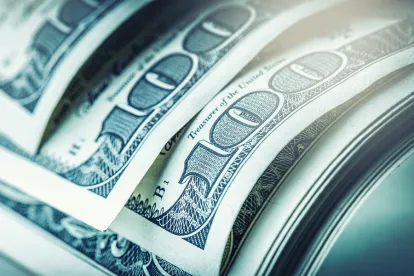Highlights
- Main Street Program loan facilities expanded to include businesses employing up to 15,000 or with revenues under $5 billion
- A new program called the Main Street Priority Loan Facility (MSPLF) has been added, with adjusted maximum loan size
- The expanded program offers more options to a broader set of eligible small and medium-sized businesses
On April 30, 2020, the Federal Reserve announced new terms for the loan programs intended to facilitate $600 billion in funds to eligible businesses that were in good financial standing before the COVID-19 pandemic, offering four-year loans to companies. The Federal Reserve expanded the eligible businesses to those employing up to 15,000 (increased from 10,000 employees) or with revenues less than $5 billion (raised from $2.5 billion), with the express intent to help businesses maintain payroll and retain employees by using the loan proceeds.
The Federal Reserve has also expanded the original loan program to include a third facility: the Main Street Priority Loan Facility (MSPLF), has posted three term sheets and has updated its FAQ document for the basic terms of the loans available under the Main Street Program:
- Main Street New Loan Facility (MSNLF) for new loans originated on or after April 24, 2020
- Main Street Priority Loan Facility (MSPLF) for new loans originated on or after April 24, 2020
- Main Street Expanded Loan Facility (MSELF) applies to loans existing before April 24, 2020, that will be “upsized” through the program
No start date has been announced yet for the Main Street Program.
Like with the Paycheck Protection Program (PPP), a business will apply to a private lender for a Main Street loan. Lenders will determine each borrower’s eligibility and each borrower will have to go through the lender’s underwriting process to evaluate the financial condition and creditworthiness of potential borrowers.
Eligible borrowers will not automatically qualify for a loan – or the amount of the loan applied for – under the program. The private lender will sell 95% of the MSNLF or MSELF loans and 85% of the MSPLF loans to the Main Street special purpose vehicle (SPV) set up by the U.S. Department of Treasury with $75 billion of equity allocated under section 4027 of the Coronavirus Aid, Relief and Economic Security Act (CARES Act). The ultimate size of the Main Street Loan facilities will be up to $600 billion. Principal and interest payments will be deferred for one year. Businesses that have utilized the PPP may also take out a loan under the Main Street Program.
Unlike loans under the PPP, Main Street loans are not forgivable and borrowers will be responsible for up to 2% in origination and facility fees. Borrowers may not use proceeds of Main Street loans to repay or refinance preexisting loans, and will use “commercially reasonable efforts” to maintain payroll and retain employees during the term of the loan.
| Main Street Lending Program Loan Options | MSNLF (Main Street New Loan Facility) |
MSPLF (Main Street Priority Loan Facility) |
MSELF (Main Street Expanded Loan Facility) |
|
Term |
4 years | 4 years | 4 years |
|
Minimum Loan Size |
$500,000 | $500,000 | $10 million |
|
Maximum Loan Size |
Lesser of (i) $25 million or (ii) 4X 2019 Adjusted EBITDA minus existing outstanding and undrawn available debt |
Lesser of (i) $25 million |
Lesser of (i) $200 million, (ii) 35% of outstanding andundrawn available debt, or
|
|
Risk Retention for Lender
|
5% | 15% | 5% |
| Payment (year ones deferred for all loans) |
Year 2: 33.33% Year 3: 33.33% Year 4: 33.34% |
Year 2: 15% Year 3: 15% Year 4: 70% |
Year 2: 15% Year 3: 15% Year 4: 70% |
| Rate | LIBOR + 3% | LIBOR + 3% | LIBOR + 3% |
General Terms of Main Street Loan Programs
The minimum loan sizes and the rates for all three Main Street Loans are significant because while the LIBOR rate is still the primary rate methodology for new loans, borrowers and lenders cannot rely on the LIBOR rate being published after the end of 2021. Loan documents under the Main Street Programs will therefore need to include fallback contract language for calculating the base interest rate.
The Treasury Department decided to use LIBOR (instead of SOFR) because a large number of comments received by the Federal Reserve noted that most lenders do not have systems in place to evaluate and issue loans based on SOFR and significant resources and the time necessary to implement the change to SOFR would delay some banks implementation of the Main Street Loan Programs.
In addition, all interest (LIBOR + 3.0%) will be deferred for one year. Each loan programs will have repayment terms over three years; the MSNLF facilities will have a straight-line payment schedule (33.33% over three years), while the MSPLF and MSELF facilities will have a smaller upfront requirement repayment in years two and three and a larger balloon final payment in year four.
There is no prepayment penalty for any of the loan programs. For the MSPLF and MSELF, the loan must be senior to or pari passu with, in terms of priority and security, the borrower’s other loans or debt instruments, other than mortgage debt.
All three Main Street Loans are full-recourse loans and are not forgivable. No collateral will be necessary for the MSNLF and the MSPLF programs; additional collateral might be required for the MSELF loans if the original loan was secured. An MSNLF Loan may not be contractually subordinated in terms of priority to the Eligible Borrower’s other loans or debt instruments.
Eligible Borrowers
Unfortunately, because of the use of the EBITDA metric, the Main Street Loan programs will not be appropriate for asset-based borrowers; however, the FAQs state that the Federal Reserve and Treasury Department “will be evaluating the feasibility of adjusting the loan eligibility metrics” for such asset-based borrowers. Significantly, the FAQs posted by the Federal Reserve on April 30, 2020, states that nonprofit entities are not eligible to apply for these programs at the current time. Additionally, borrowers and lenders will also need to determine the borrower’s “existing outstanding and undrawn available debt” in order to calculate the maximum amount of the MSELF loan.
To be eligible, a business organization must: (i) have 15,000 or less employees or a maximum of $5 billion in annual revenues for 2019, (ii) have been established prior to March 13, 2020, and (iii) meet the following conditions:
- It is a U.S. entity with significant operations in and a majority of its employees based in the U.S.
- It was in good financial condition prior to the crisis
- It is not also a participant in the Primary Market Corporate Credit Facility
- It may only participate in one of the Main Street programs (MSNLF, MSPLF, or MSELF)
To determine eligibility, borrowers must calculate the number of employees and 2019 revenues using the aggregated employees and revenues of the borrower and all of the borrower’s affiliates as determined by the SBA regulations set forth in 13 CFR § 121.301(f). These regulations will be familiar to those experienced with the PPP.
Preparations for Applications
Borrowers should be in contact with their primary lender now to determine if the lender will be participating in these Main Street Loan Programs. If eligible borrowers need to find a new eligible lender for application under the Main Street Loan Programs, borrowers need to be prepared to undergo the full underwriting process at a new bank, which will include information on each beneficial owner, previous year’s tax returns and organizational documents for each entity.
Borrowers must also be prepared to pay the fees associated with the application and servicing of the loans to both its lender and the Treasury Department via the SPV. The fees for the MSNLF and MSPLF facilities will be up to 2.0% of the principal amount of the loan, all of which may be paid by the borrower. Borrowers applying for the MSELF loans may be charged up to 1.5% of the principal amount of the upsized tranche.
Restrictions for Businesses Receiving Funds
There will be certain restrictions on borrowers’ businesses. The compensation, stock repurchase and capital distributions that apply to the direct loan programs under Section 4003(c)(3)(A)(ii) of the CARES Act will also apply to the Main Street Loan participants. Borrowers will be prohibited from engaging in stock buybacks of shares of the borrower or its parent entities, unless contractually obligated prior to the enactment of the CARES Act, or from paying dividends or making capital distributions with respect to common stock, during the life of the loan and for 12 months following full repayment of the loan proceeds.
Borrowers will also be prohibited from increasing compensation of any employee whose compensation exceeded $425,000 in 2019, or from offering significant severance or termination benefits until one year after the loan proceeds have been paid in full. Borrowers’ officers and employees whose total compensation exceeded $3 million in 2019 cannot receive compensation greater than $3 million plus 50% of the amount over $3 million that the individual received in 2019 until one year after the Main Street Loan has been paid in full. Borrowers will also be prevented from prepaying any optional principal and interest on debt that existed prior to the borrower’s application to the Main Street Lending Program, unless the debt or interest payment is mandatory and due. The Treasury Department may set forth more restrictions prior to full implementation of the Main Street Loan Programs.





 />i
/>i
